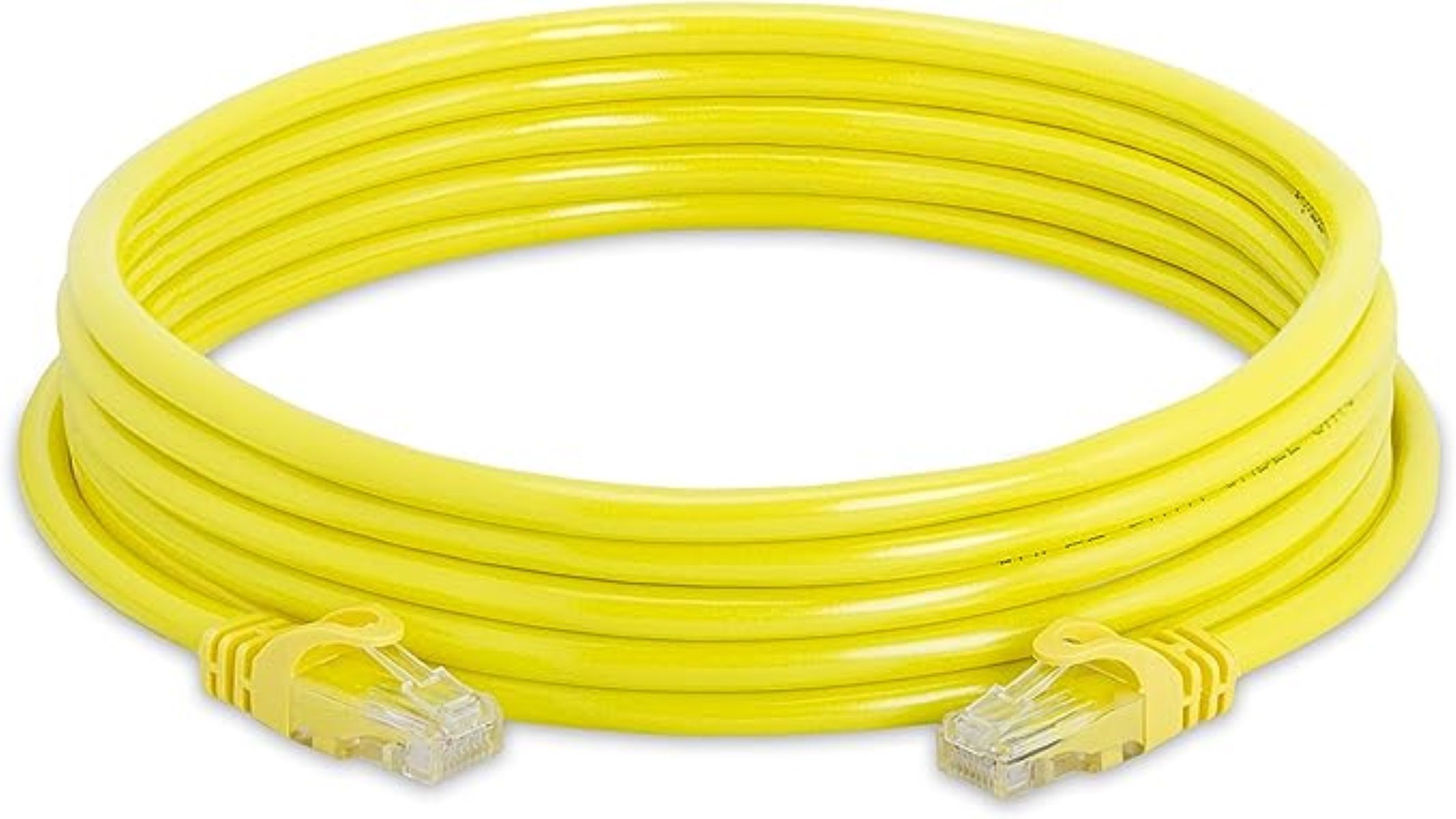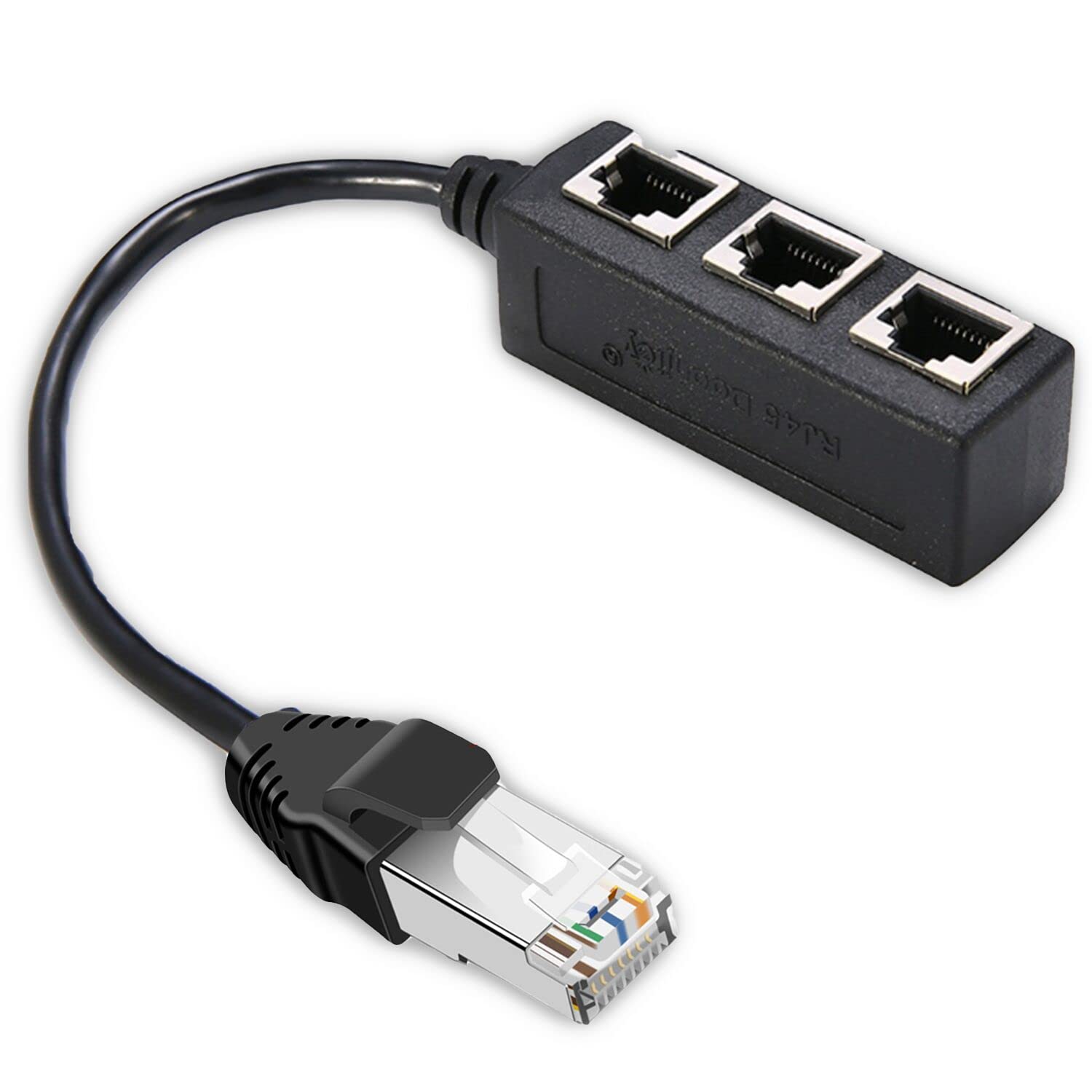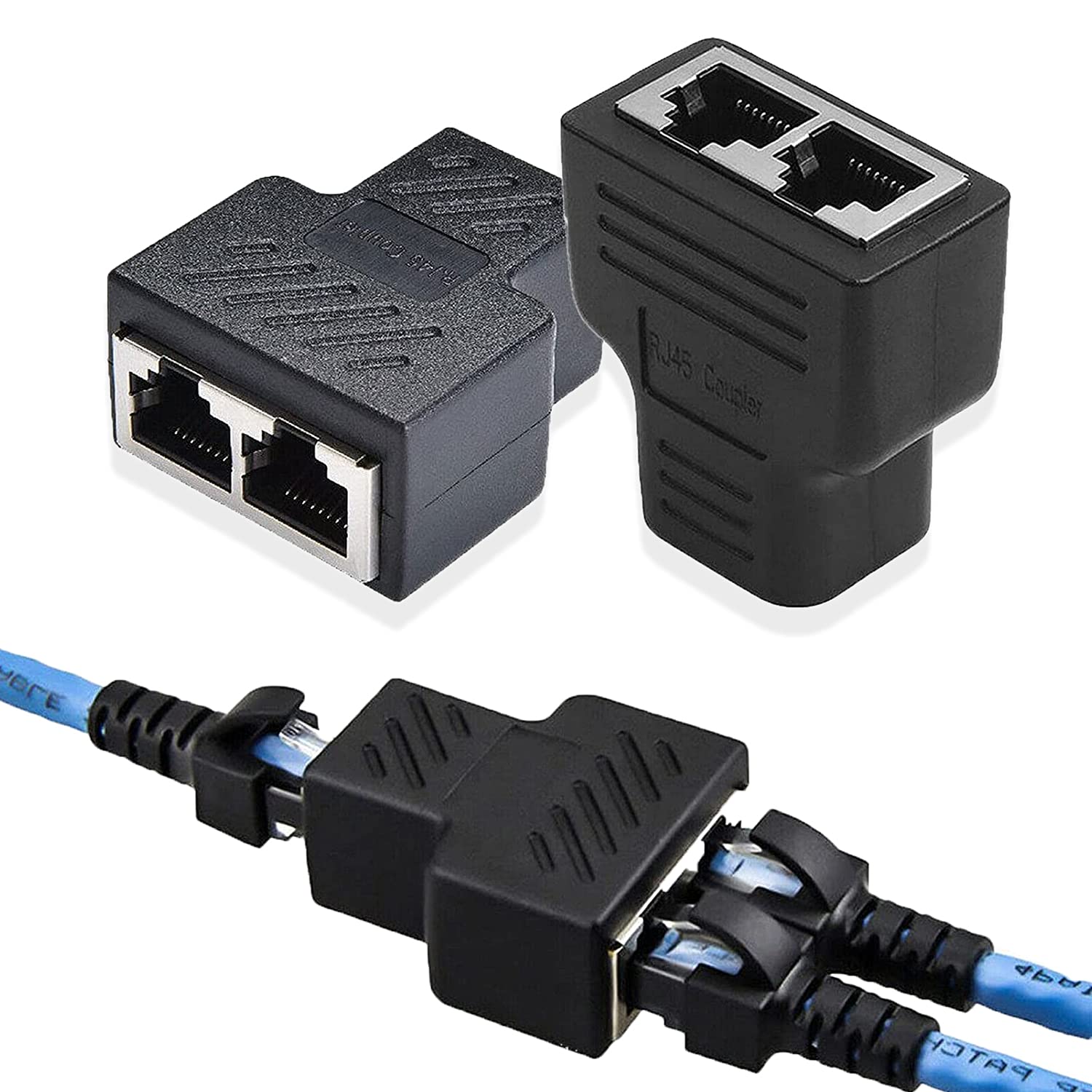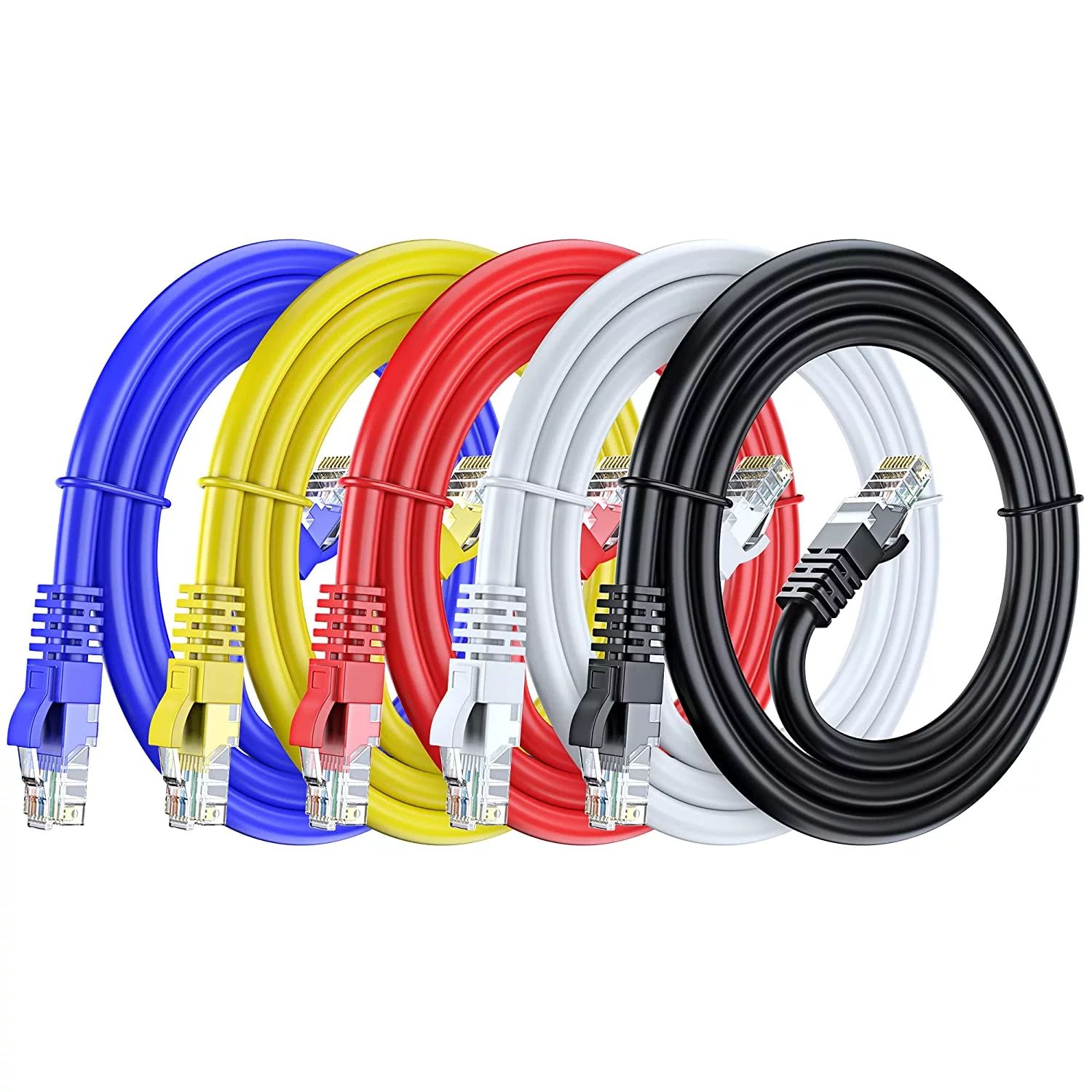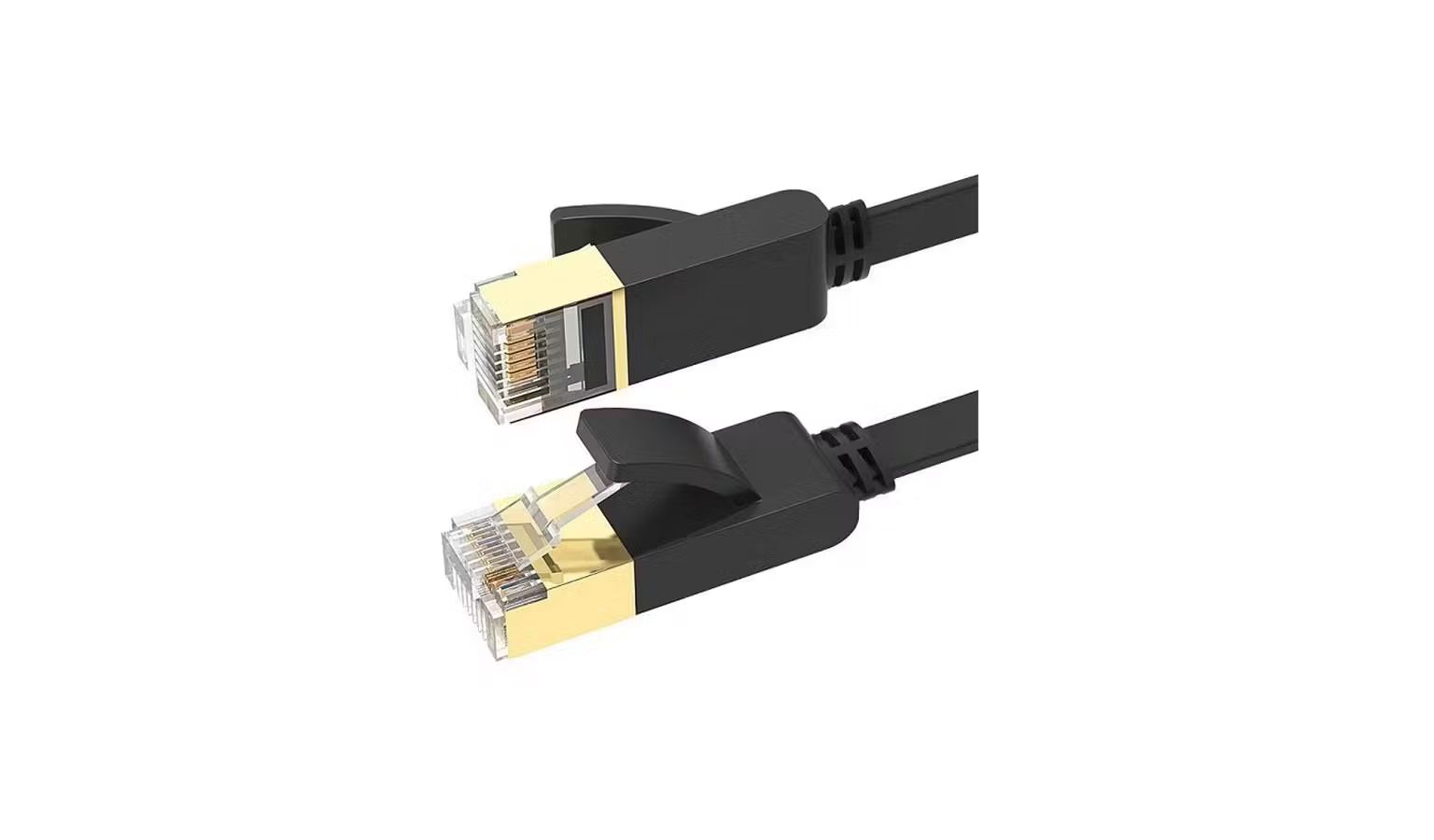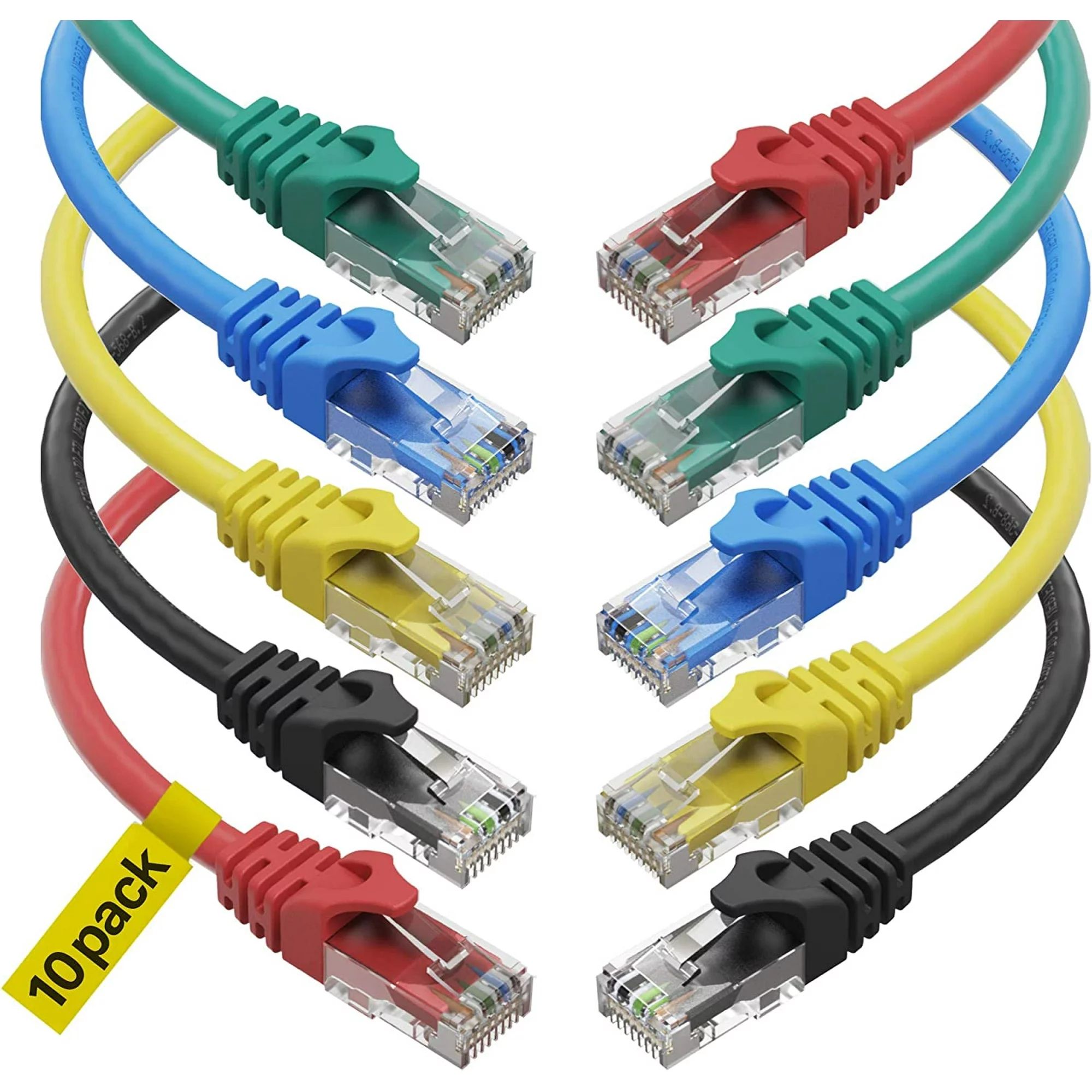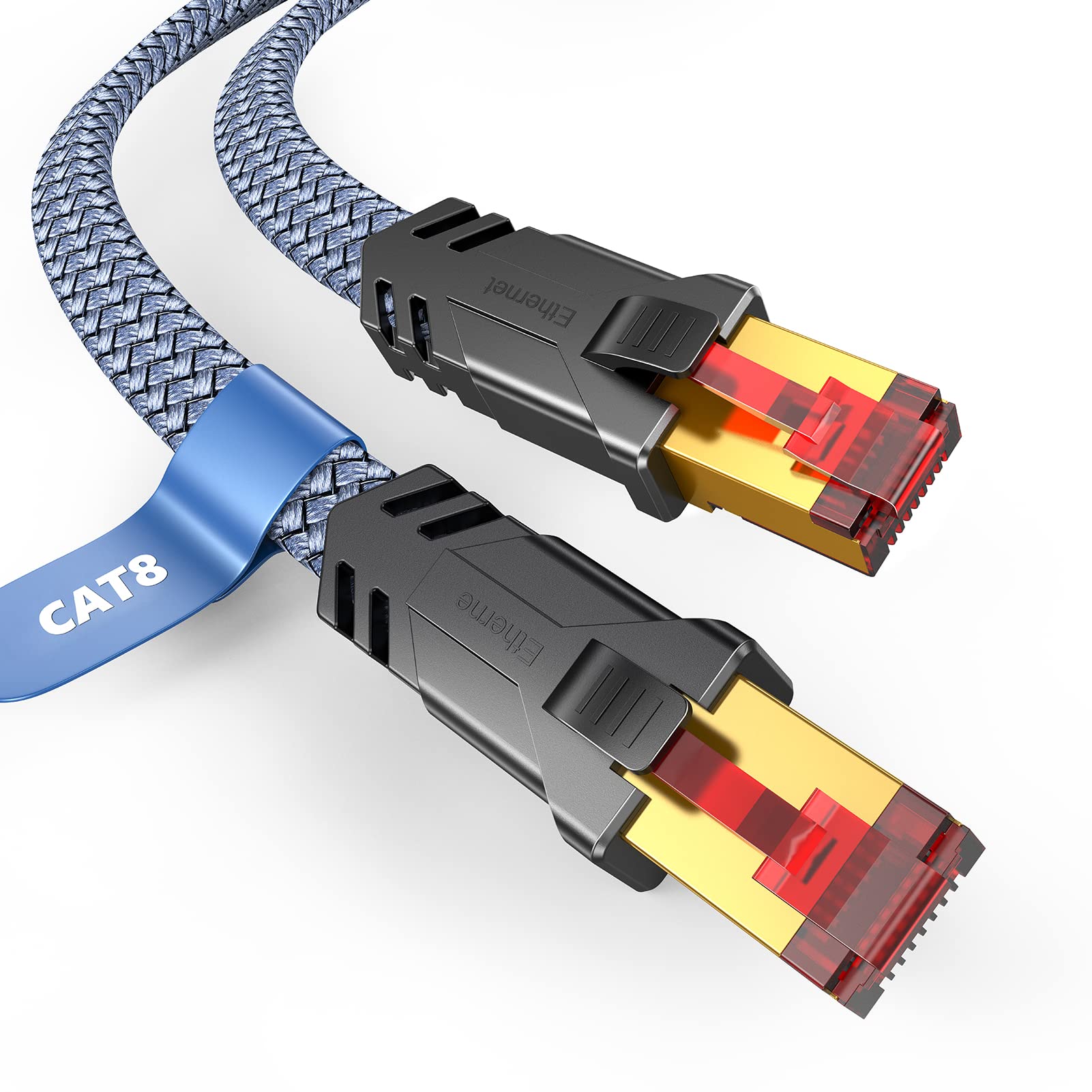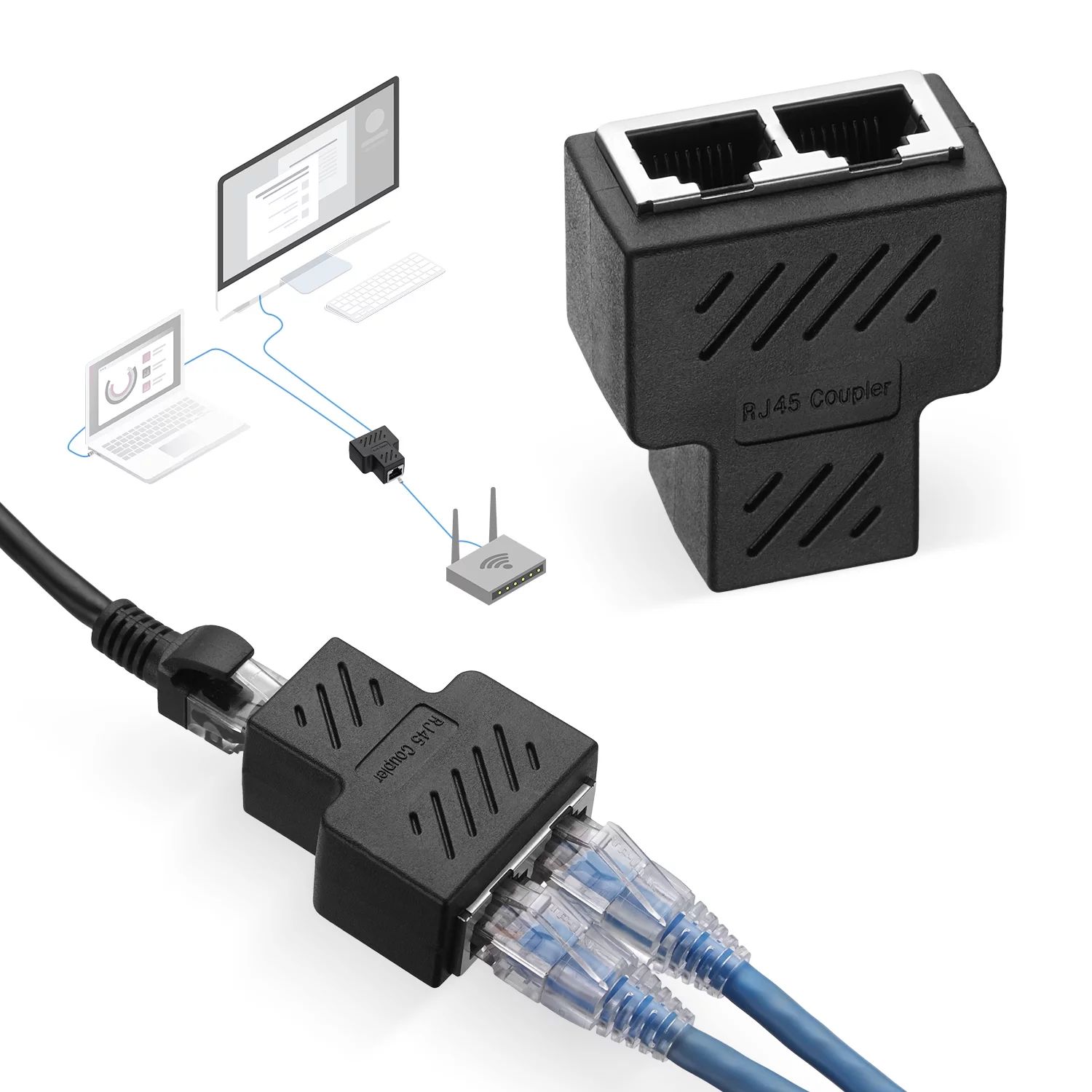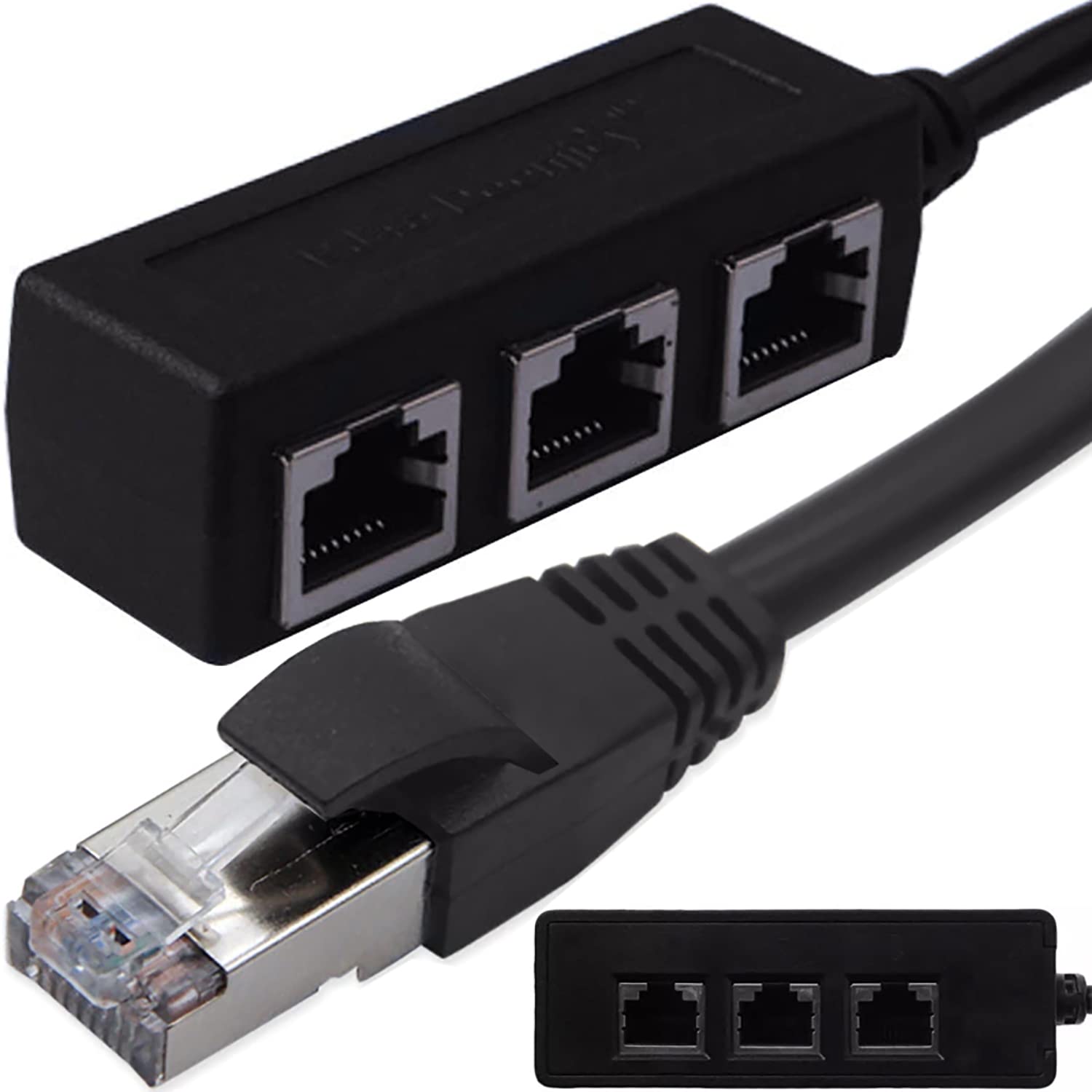Introduction
Welcome to the world of Ethernet cables! Whether you’re setting up a home network or optimizing the connectivity of your office, understanding the thickness of Ethernet cables is crucial. Ethernet cables are the backbone of any network, connecting devices to routers, switches, and modems. The thickness of these cables plays a significant role in determining their performance and suitability for different applications.
In this article, we will explore the importance of Ethernet cable thickness, delve into the standards for various types of Ethernet cables, and discuss the factors that influence their thickness. By the end, you’ll have a clear understanding of what thickness you should consider for your networking needs.
Before we dive into the specifics, it’s essential to note that Ethernet cables come in different categories, each designed for a specific purpose. The most commonly used categories include Cat5e, Cat6, Cat6a, and Cat7. The thickness of these cables varies based on their category, and understanding the differences can help you make an informed decision while selecting the right cable for your requirements.
Now, let’s proceed to explore the standard thickness for each category of Ethernet cables.
The Standard Thickness of Ethernet Cables
Ethernet cables are manufactured based on industry standards that define their performance capabilities and physical characteristics. These standards outline the maximum thickness allowed for each category of Ethernet cables. Let’s take a look at the standard thickness specifications for the most common types of Ethernet cables:
- Cat5e Ethernet Cable Thickness: Cat5e (Category 5e) cables are widely used for Ethernet network connections. According to industry standards, Cat5e cables have a maximum thickness of 5.6mm. This thickness ensures efficient data transmission and support for speeds up to 1 gigabit per second.
- Cat6 Ethernet Cable Thickness: Cat6 (Category 6) cables are an improved version of Cat5e cables, designed for higher bandwidth and faster data transfer rates. The standard maximum thickness for Cat6 cables is 6.0mm. With this thickness, Cat6 cables can support speeds up to 10 gigabits per second over short distances.
- Cat6a Ethernet Cable Thickness: Cat6a (Category 6a) cables offer even higher performance compared to Cat6 cables, making them suitable for applications that require extended bandwidth and higher data transfer rates. These cables have a standard maximum thickness of 6.5mm, allowing them to support speeds up to 10 gigabits per second over longer distances.
- Cat7 Ethernet Cable Thickness: Cat7 (Category 7) cables are designed to deliver exceptional performance and shielding capabilities. With a maximum thickness of 7.0mm, Cat7 cables can handle data transfer speeds up to 10 gigabits per second over 100 meters. The additional shielding ensures minimal interference, making Cat7 cables ideal for demanding environments where reliability is crucial.
It’s important to note that these thickness specifications are standardized to ensure compatibility and performance consistency across different manufacturers and network setups. Adhering to these standards will help ensure that your Ethernet cables work optimally and deliver the expected performance.+
Cat5e Ethernet Cable Thickness
Cat5e (Category 5e) Ethernet cables are one of the most widely used types of cables for network connections. They are known for their reliable performance and affordability. When it comes to thickness, Cat5e cables have a standard maximum thickness of 5.6mm.
The 5.6mm thickness of Cat5e cables ensures a balance between flexibility and durability. It allows for easy installation and routing while maintaining the structural integrity of the cable. This thickness also provides sufficient insulation and protection for the internal twisted pairs of wires, minimizing signal interference and crosstalk.
Cat5e cables are capable of supporting data transfer speeds of up to 1 gigabit per second (Gbps) over distances of up to 100 meters. The thickness of the cable helps maintain consistent and reliable data transmission, without significant degradation in signal quality.
Due to its moderate thickness, Cat5e cables are suitable for various applications, including home networks, small offices, and light commercial use. They are commonly used for connecting computers, gaming consoles, printers, and other devices to routers or switches.
It’s worth noting that while Cat5e cables have a maximum thickness of 5.6mm, the actual cable thickness may vary slightly among different manufacturers. However, as long as the cable meets the standards for Cat5e performance, the slight variation in thickness should not significantly affect its functionality.
If you are planning to set up a basic network with moderate bandwidth requirements, Cat5e cables with their standard thickness of 5.6mm are a reliable and cost-effective choice. They offer excellent performance for most everyday networking needs.
Cat6 Ethernet Cable Thickness
Cat6 (Category 6) Ethernet cables are an upgraded version of Cat5e cables, designed to provide higher bandwidth and faster data transfer speeds. The standard maximum thickness for Cat6 cables is 6.0mm.
The slightly thicker profile of Cat6 cables compared to Cat5e cables allows for improved performance and enhanced signal integrity. The 6.0mm thickness provides better insulation and shielding, reducing crosstalk and interference between the internal twisted pairs of wires.
Cat6 cables are capable of supporting data transfer speeds of up to 10 gigabits per second (Gbps) over shorter distances, typically up to 55 meters. The increased thickness of the cable helps to maintain signal integrity and prevent signal attenuation, enabling reliable and high-speed data transmission.
The additional thickness of Cat6 cables also enhances their overall durability and flexibility, making them easier to install and less prone to damage. This makes Cat6 cables suitable for a wide range of applications, including large office networks, data centers, and high-bandwidth multimedia streaming.
It’s important to note that Cat6 cables are backward compatible with Cat5e cables. This means you can use Cat6 cables to connect devices that require a Cat5e connection, although the maximum speed will be limited to the capabilities of the Cat5e standard.
When selecting Cat6 cables, it’s essential to ensure that they meet the industry standards for Cat6 performance and the specified 6.0mm thickness. This will ensure compatibility and guarantee optimal Ethernet connectivity for your network.
If you require higher bandwidth and faster data transfer speeds for your network infrastructure, Cat6 cables with their standard thickness of 6.0mm are the recommended choice. They offer improved performance and reliability compared to Cat5e cables, making them suitable for more demanding networking environments.
Cat6a Ethernet Cable Thickness
Cat6a (Category 6a) Ethernet cables are an advanced and enhanced version of Cat6 cables, specifically designed to meet the increasing demands for higher bandwidth and faster data transfer rates. These cables have a standard maximum thickness of 6.5mm.
The additional thickness of Cat6a cables compared to Cat6 cables offers several benefits. The increased thickness allows for improved shielding and reduced crosstalk between the internal twisted pairs of wires. This enhanced shielding helps minimize electromagnetic interference, ensuring cleaner and more reliable data transmission.
Cat6a cables are capable of supporting data transfer speeds of up to 10 gigabits per second (Gbps) over longer distances, typically up to 100 meters. The increased thickness of the cable enables minimal signal attenuation, allowing for reliable high-speed data transmission with minimal loss of signal quality.
The thicker profile of Cat6a cables also contributes to their overall durability and longevity. It enhances the cable’s resistance to damage, bending, and wear, making it suitable for environments with higher traffic or more demanding installation requirements.
Cat6a cables are especially beneficial in applications that require extended bandwidth, such as data centers, server rooms, and high-performance multimedia streaming. They provide the necessary performance and reliability to handle large data transfers and support high-bandwidth applications.
When selecting Cat6a cables, it is essential to ensure that they meet the industry standards for Cat6a performance and possess the specified 6.5mm thickness. Adhering to these standards ensures compatibility and ensures that you get the optimal performance and reliability expected from Cat6a Ethernet cables.
If you require enhanced performance, greater bandwidth, and longer transmission distances for your network infrastructure, Cat6a cables with their standard thickness of 6.5mm are the recommended choice. They provide superior performance and reliability compared to Cat6 cables, making them suitable for advanced networking applications.
Cat7 Ethernet Cable Thickness
Cat7 (Category 7) Ethernet cables are designed for exceptional performance and superior shielding capabilities. These cables have a standard maximum thickness of 7.0mm, which allows for enhanced signal integrity and minimal interference.
The increased thickness of Cat7 cables compared to previous categories of Ethernet cables provides improved shielding against external electromagnetic interference (EMI) and reduced crosstalk between the internal twisted pairs of wires. This shielding helps maintain a clean and reliable signal, even in demanding network environments.
Cat7 cables are capable of supporting data transfer speeds of up to 10 gigabits per second (Gbps) over 100 meters. The thickness of the cable allows for minimal signal attenuation, ensuring consistent and high-speed data transmission without significant loss of signal quality.
One notable feature of Cat7 cables is their ability to support higher frequencies, up to 600 MHz. This makes them well-suited for applications requiring extensive bandwidth and minimal data loss, such as large-scale data centers, high-performance computing, or environments with a significant amount of electromagnetic interference.
The increased thickness of Cat7 cables also contributes to their overall durability and flexibility. It allows for more robust construction, better resistance to bending and damage, and easier installation. These features make Cat7 cables suitable for both indoor and outdoor use.
It’s important to note that Cat7 cables are backward compatible with previous categories, such as Cat6 and Cat6a. This means you can use Cat7 cables in a network with devices that require a lower category connection. However, the full benefits of Cat7 performance can only be realized when using Cat7 compatible devices.
When selecting Cat7 cables, it’s essential to ensure that they meet the industry standards for Cat7 performance and possess the specified 7.0mm thickness. This guarantees compatibility and ensures optimal performance and reliability for your network infrastructure.
If you need unparalleled performance, superior shielding, and the ability to handle extensive bandwidth and demanding network conditions, Cat7 cables with their standard thickness of 7.0mm are the recommended choice. They provide the highest level of performance and reliability for advanced networking applications.
Factors Influencing Ethernet Cable Thickness
The thickness of an Ethernet cable is determined by various factors, each playing a crucial role in its design and performance. Here are some key factors influencing Ethernet cable thickness:
- Performance Requirements: The desired performance of the Ethernet cable is a significant factor in determining its thickness. Cables designed for higher bandwidth and faster data transfer speeds generally require a thicker profile to ensure optimal signal integrity and minimal signal attenuation over longer distances.
- Transmission Distance: The required transmission distance also influences the thickness of an Ethernet cable. Longer transmission distances typically require thicker cables to minimize signal loss and maintain reliable data transmission. Thicker cables help reduce signal attenuation, ensuring a consistent and robust connection throughout the entire length of the cable.
- Shielding Requirements: The level of shielding required to protect the cable from external interference is another factor affecting thickness. Cables with better shielding capabilities, such as those used in environments with high electromagnetic interference (EMI), may have a thicker profile to provide the necessary protection against external noise and crosstalk.
- Installation Conditions: The environment and installation conditions also play a role in determining cable thickness. Cables that require increased durability to withstand harsh conditions or frequent movement may have a thicker construction. Flexibility is another consideration, as cables may need to bend or navigate tight spaces during installation.
- Manufacturing Standards: Ethernet cables must adhere to industry standards to ensure compatibility and performance consistency. These standards define the maximum cable thickness allowed for each category, ensuring that cables from different manufacturers can be used interchangeably within networking systems.
It’s important to note that while these factors influence cable thickness, there is a balance that manufacturers must strike. Thicker cables provide enhanced performance and durability but may be less flexible and more challenging to install in certain scenarios. On the other hand, cables that are too thin may compromise performance and signal quality.
By considering these factors and striking the right balance, manufacturers can design Ethernet cables with optimal thickness to meet specific performance requirements while ensuring compatibility and reliability.
Importance of Ethernet Cable Thickness
The thickness of an Ethernet cable plays a crucial role in determining its performance and suitability for different networking applications. Here are some reasons highlighting the importance of Ethernet cable thickness:
- Signal Integrity: A thicker cable helps maintain reliable signal integrity by minimizing signal loss and attenuations. Thicker cables have lower resistance, allowing signals to travel more efficiently and reducing the chances of data corruption or transmission errors. This is especially important for high-speed data transfer and long-distance networking.
- Noise Reduction: Ethernet cables with sufficient thickness provide better shielding against electromagnetic interference (EMI) and crosstalk. Thicker cables have more space for adequate shielding layers, which helps prevent external noise from affecting signal quality. This is particularly essential in environments with high levels of electrical equipment or nearby sources of interference.
- Performance Consistency: The thickness of an Ethernet cable directly impacts its ability to consistently deliver the desired performance. Thicker cables minimize the impact of environmental factors, such as temperature variations, bending, or physical stress, on signal transmission. This results in more stable and reliable network connections.
- Bandwidth and Data Speeds: Thicker Ethernet cables are capable of supporting higher bandwidth and faster data transfer speeds. The increased thickness allows for improved insulation, less interference, and reduced signal loss, enabling the cable to handle more extensive data transmission. This is particularly important for applications that require high-speed data transfer, such as multimedia streaming, video conferencing, or large data transfers.
- Durability and Longevity: Ethernet cable thickness is closely linked to its durability and longevity. Thicker cables are generally more robust and resistant to damage caused by bending, pulling, or rough handling during installation. This ensures that the cable maintains its performance over an extended period and reduces the need for frequent replacements or repairs.
Choosing the right Ethernet cable thickness for your specific networking needs can significantly impact the overall performance and reliability of your network. It is essential to consider factors such as transmission distance, environmental conditions, and bandwidth requirements to ensure optimal connectivity and data transfer without compromising signal quality or network efficiency.
By understanding and appreciating the importance of Ethernet cable thickness, you can make informed decisions when selecting cables for your networking infrastructure, ensuring that your network operates at its best capacity while minimizing potential issues and maximizing performance.
Conclusion
Ethernet cable thickness is a critical factor in ensuring reliable and efficient network connectivity. The standard thickness for different categories of Ethernet cables, such as Cat5e, Cat6, Cat6a, and Cat7, is defined by industry standards to maintain compatibility and performance consistency.
The thickness of an Ethernet cable directly impacts its ability to maintain signal integrity, reduce interference, and support higher bandwidth and faster data transfer speeds. Thicker cables offer enhanced insulation, shielding, and durability, resulting in more stable and reliable network connections.
When selecting Ethernet cables, it’s important to consider factors such as performance requirements, transmission distance, shielding requirements, installation conditions, and adherence to manufacturing standards. These factors influence the optimal thickness needed for your networking needs.
Choosing the right Ethernet cable thickness ensures that your network can effectively handle the demands of various applications, whether it’s for personal use or enterprise-level setups. It guarantees reliable data transmission, minimal signal loss, and maximum network performance.
By understanding the importance of Ethernet cable thickness and considering the specific requirements of your network, you can make informed decisions and select the appropriate cables that will deliver the best performance and reliability for your networking infrastructure.







